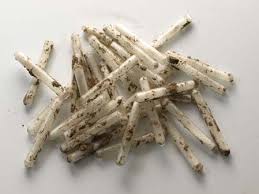Post by shinester on Apr 25, 2016 21:52:40 GMT 10
Calcium Hypochlorite, commonly called pool shock is great stuff a little goes a long way in sanitizing water to make it suitable for drinking. You need very little
such that,
1 gram does 90L of water
5 grain does 30L of water.
A 1kg tub, 90,000L. Aka about enough for a lifetime [60 years at 4L a day].
The trouble is and unlike all of the prepper info I've seen on it, it 'does' slowly decompose in air, though only in the presence of moisture, which of course is in the air. This isn't a major issue if kept dry, there's so much of it in a 1L tub that you'll not have issues, but it does pose a problem if you try to store it in containers. I've had plastic bags slowly swell up, glass vials with suitable lids pop off their lid, multiple layers of glad wrap swell and so on, again not a major issue, except the gas [only small amounts] is chlorine which is an excellent oxidant and guess what it does to metal... yep oxidises [rust] it. So imagine trying to keep it in your Bug out bag where it can eat away at your radio or in my case a windup torch.
So how to store it? Ideally we'll seal it from air/moisture and I would imagine that we all know some ways of doing that, perhaps a vac-seal might work [haven't tried], though I just have to do it the tried and tested excessive way of using glass ampoules. A word of caution, it's important to 'not' heat the Calcium Hypochlorite up and it will melt and worse make gas! Luckily glass is an excellent insulator and ought to be fine if the direct heat is kept at the other end of the chemical. That is, you ought to be able to hold the end with the chemical in it with your hand, assuming it's long enough.
So the plan here is to put in a measured amount for a food storage bucket and so with the breaking of the ampoule, we have just the right amount without having to measure difficult [very small amounts] in an Austere environment.

I think the proof of longevity is above, these ampoules of Calcium Hypochlorite were buried [hence the mud] since WW1 and brought up intact after a century. It was used as a mustard gas neutralizer.
Obviously other methods could be explored, though I picked up 250 glass pipettes [as per the video above] for $30.
such that,
1 gram does 90L of water
5 grain does 30L of water.
A 1kg tub, 90,000L. Aka about enough for a lifetime [60 years at 4L a day].
The trouble is and unlike all of the prepper info I've seen on it, it 'does' slowly decompose in air, though only in the presence of moisture, which of course is in the air. This isn't a major issue if kept dry, there's so much of it in a 1L tub that you'll not have issues, but it does pose a problem if you try to store it in containers. I've had plastic bags slowly swell up, glass vials with suitable lids pop off their lid, multiple layers of glad wrap swell and so on, again not a major issue, except the gas [only small amounts] is chlorine which is an excellent oxidant and guess what it does to metal... yep oxidises [rust] it. So imagine trying to keep it in your Bug out bag where it can eat away at your radio or in my case a windup torch.
So how to store it? Ideally we'll seal it from air/moisture and I would imagine that we all know some ways of doing that, perhaps a vac-seal might work [haven't tried], though I just have to do it the tried and tested excessive way of using glass ampoules. A word of caution, it's important to 'not' heat the Calcium Hypochlorite up and it will melt and worse make gas! Luckily glass is an excellent insulator and ought to be fine if the direct heat is kept at the other end of the chemical. That is, you ought to be able to hold the end with the chemical in it with your hand, assuming it's long enough.
So the plan here is to put in a measured amount for a food storage bucket and so with the breaking of the ampoule, we have just the right amount without having to measure difficult [very small amounts] in an Austere environment.
I think the proof of longevity is above, these ampoules of Calcium Hypochlorite were buried [hence the mud] since WW1 and brought up intact after a century. It was used as a mustard gas neutralizer.
Obviously other methods could be explored, though I picked up 250 glass pipettes [as per the video above] for $30.


